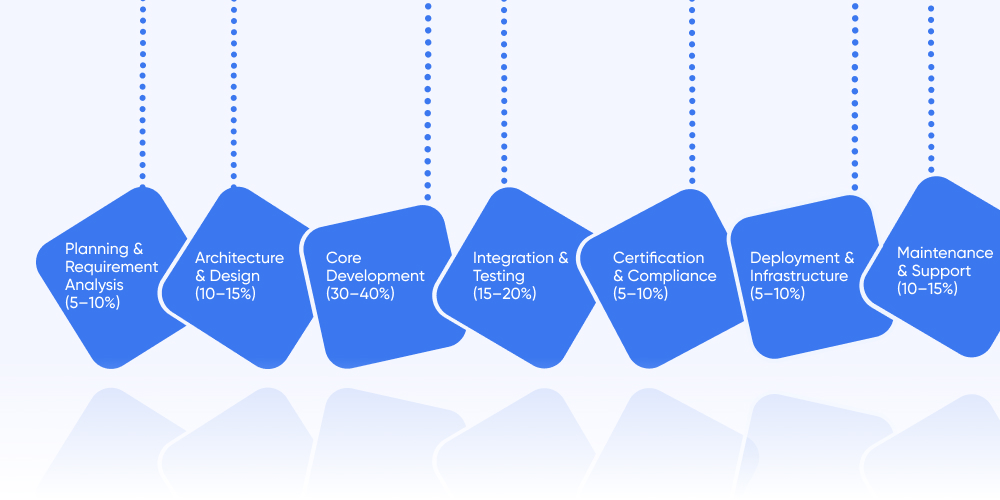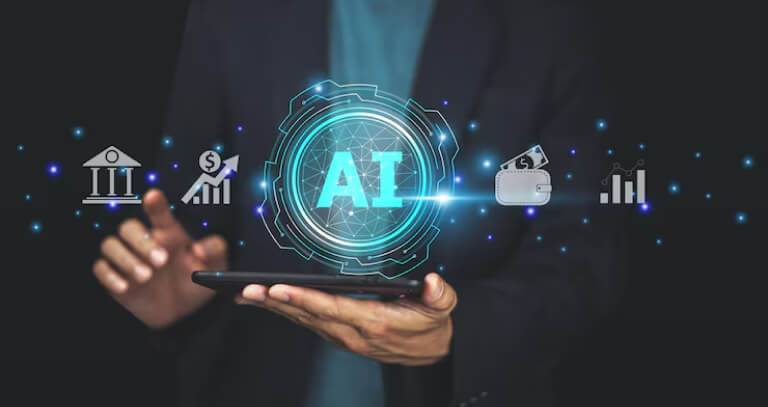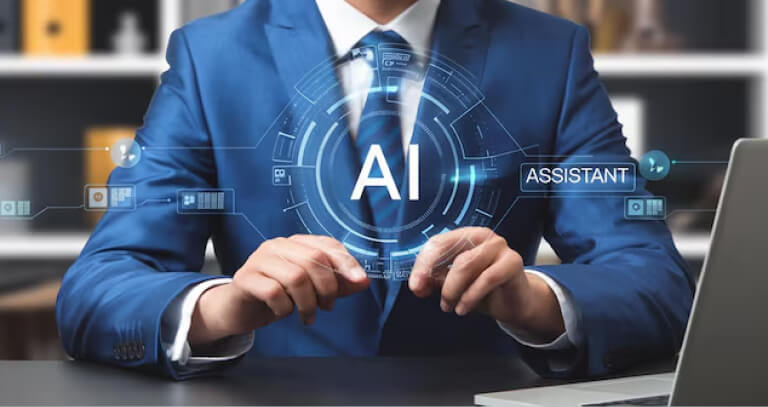Automotive Software Development Cost Breakdown
Ditstek Blogs
Software is quietly becoming the most valuable component in the automotive industry. Not the engine. Not the design. The code.
From lane-keeping systems to touchscreen dashboards and EV battery monitoring, every major function in a modern vehicle runs on software. As the automotive world moves toward self-driving, electric, and fully connected vehicles, the need for smarter and safer software is growing fast.
But here’s the tricky part: automotive software isn’t just another mobile app with a steering wheel. It’s complex. It’s regulated. It’s tightly coupled with hardware. And yes, it can get expensive fast if you don’t know what you’re getting into.
So what actually drives the cost? Is it the safety certifications? The testing? The real-time performance requirements? The team’s location?
In this guide, we’ll break it all down clearly, practically, and without the jargon. Whether you're an OEM, a Tier 1 supplier, or a startup building the next connected vehicle platform, this will give you a grounded look at what it takes to build automotive software and what it costs.
Need a Custom Cost Estimate?
Every automotive software project is unique. Get a tailored cost breakdown based on your specific requirements.
What is Automotive Software
Automotive software is the digital brainpower behind today’s vehicles. It controls how your car thinks, reacts, entertains, and even updates itself. We're talking about everything from the algorithm that triggers emergency braking to the app that starts your EV remotely.
Unlike regular consumer apps, automotive software has to work in real-time, under strict safety conditions, often while talking to dozens of sensors, ECUs, and hardware components and all at once. And it’s not just one system. A typical modern car runs 100+ million lines of code spread across multiple domains like drivetrain, infotainment, safety, telematics, energy management and more.
At its core, automotive software connects three key layers:
- Embedded systems running directly on ECUs (Electronic Control Units)
- Middleware like AUTOSAR that manages communication and safety
- Application layers handling driver-facing features like navigation, voice control, or app integration
Types of Automotive Software
From keeping you safe to keeping you entertained, automotive software does it all. But not all software is built the same. Each system has its own role, from powering the engine to powering your playlist. Curious how it all fits together? Let’s break it down:
| Infotainment Systems | This is what drivers interact with daily: touchscreens, music, navigation, voice assistants, and smartphone integrations like Apple CarPlay or Android Auto. It’s about user experience, not horsepower. |
| Advanced Driver Assistance Systems (ADAS) | Think lane-keeping, adaptive cruise control, emergency braking. These systems rely on real-time data from cameras, radars, and sensors. The software here must be lightning-fast and fail-proof. |
| Telematics | This covers communication between the vehicle and external systems like GPS tracking, fleet monitoring, remote diagnostics, and even insurance data. It’s all about connectivity. |
| Battery Management Systems (BMS) | In EVs, the BMS monitors battery health, charge levels, and thermal conditions. If it fails, the vehicle’s range or safety can take a hit. |
| Powertrain & Control Systems | These handle engine control, transmission, fuel injection, and emissions. They're deeply embedded, safety-critical, and tightly integrated with hardware. |
| Vehicle-to-Everything (V2X) | V2X allows cars to talk to other vehicles, traffic lights, road infrastructure, and even pedestrians. It’s key for smart city ecosystems and autonomous driving. |
| Over-the-Air (OTA) Update Systems | Modern vehicles can receive software patches remotely, just like your phone. That’s OTA in action. |
| Mobile Companion Apps | Many OEMs now offer mobile apps that sync in real time with in-car systems, letting drivers control and monitor features like remote start, climate, charging, and location. |
Talk to Automotive Software Experts!
Need guidance on features, budget, or development phases? Let’s walk you through the process.
Benefits of Automotive Software Development

Automotive software development adds value across the board: for drivers, manufacturers, and even aftermarket service providers. Here’s how:
1. Smarter, Safer Driving
ADAS and real-time monitoring systems reduce human error and help prevent accidents. Whether it’s lane detection or emergency braking, it’s software that reacts faster than you can.
2. Continuous Upgrades
OTA updates keep your vehicle up to date by fixing bugs, adding features, and boosting performance.
3. Better User Experience
From infotainment to personalized settings, software transforms the driving experience into a connected, user-centric journey.
4. Real-Time Data & Predictive Insights
Predictive maintenance powered by telematics means fewer breakdowns, less downtime, and smoother operations.
5. Regulatory Compliance & Emission Control
Software plays a critical role in meeting fuel efficiency standards and emissions regulations. It optimizes how engines run, how batteries are managed, and how diagnostics are reported.
6. Revenue Opportunities
From premium features and in-app purchases to subscription-based services, software opens doors for entirely new business models.
7. Brand Loyalty & Differentiation
If the software feels smooth and reliable, drivers stick with it. It’s not about complex features; it’s about creating a seamless experience that feels natural and easy for every driver.
Key Features of Automotive Software Development
Here’s what to keep in mind when building software for the automotive industry:
1. Real-Time Performance: Whether it's emergency braking or navigation guidance, software must process and act on data instantly. Delays are not an option.
2. Safety & Security: From encryption to crash detection, automotive software must meet high safety standards. The industry follows strict regulations (like ISO 26262 for functional safety), and non-compliance can lead to costly consequences.
3. Cross-Platform Compatibility: Modern cars often feature multiple integrated systems like infotainment, ADAS, telematics, etc. These systems need to work smoothly together across different platforms, operating systems, and hardware.
4. Integration with Sensors and ECUs: A modern vehicle is loaded with sensors and Electronic Control Units (ECUs). Software needs to communicate seamlessly with these devices, processing signals from everything from GPS to wheel pressure sensors.
5. OTA (Over-the-Air) Updates: The ability to push software updates remotely is a game-changer. Whether it’s a bug fix, security patch, or feature upgrade, OTA updates ensure vehicles stay up-to-date without requiring a physical visit to the shop.
6. User-Centric Interface Design: Software must offer an intuitive, easy-to-navigate interface, whether it’s the dashboard, voice commands, or mobile app controls.
7. Scalability: Whether it’s adding new features or integrating with new sensors, automotive software needs to be flexible enough to scale over time.
8. Energy Efficiency: Efficient energy usage software can increase the range, extend battery life, and reduce maintenance costs.
Ready to Build Your Automotive App?
Whether it’s a connected car solution or fleet management software, we’ve got you covered.
Development Phases and Process of Automotive Software

Building automotive software is a structured, detail-heavy process that has to check boxes across safety, performance, compliance, and hardware integration. Here’s how the development lifecycle usually unfolds:
1. Requirement Gathering & Feasibility Analysis
Start with what the software needs to do and why. Is it infotainment? ADAS? BMS? Here’s where business goals meet technical reality. You’ll assess hardware limitations, compliance needs, and possible integration challenges.
2. Architecture Design
Developers define the software architecture: modular vs monolithic, communication protocols (CAN, LIN, Ethernet), middleware stacks like AUTOSAR, and interfaces between ECUs and the app layer.
3. UI/UX Design (if applicable)
For any driver-facing features like infotainment or mobile companion apps, this phase shapes how users interact with the system. Usability, accessibility, and minimal distraction are key.
4. Core Development
This is where the code gets written. Development is typically split across embedded C/C++ for low-level control systems and higher-level languages like Java, Qt, or Python for UI or cloud interfaces.
5. Integration & Simulation Testing
Since everything needs to work in sync, developers test how each module interacts with others across sensors, ECUs, and actuators. This often happens in HIL (Hardware-in-the-Loop) and SIL (Software-in-the-Loop) test environments before real-world deployment.
6. Compliance & Safety Testing
Automotive software must meet rigorous standards like ISO 26262, ASPICE, or MISRA. This phase includes code audits, documentation reviews, and edge-case simulations for functional safety.
7. Pilot Runs & Real-World Testing
After lab testing, the software hits the road. It’s tested in controlled environments, then in actual driving conditions to catch issues that only show up in real-world use.
8. Deployment & OTA Update Setup
Once stable, the software is deployed either via factory programming or over-the-air delivery. A secure update framework is set up for future patches, upgrades, or diagnostics.
9. Post-Deployment Monitoring & Maintenance
The job isn’t done post-launch. Continuous monitoring helps catch bugs early, improve performance, and push enhancements as vehicles stay on the road for years.
Get a Transparent Quote, No Surprises!
We provide clear, upfront pricing so you can plan confidently from day one.
Factors Influencing Automotive Software Development Cost

Automotive software can mean anything from a simple UI tweak to a full-blown ADAS system running real-time sensor fusion. Costs can range from thousands to millions depending on what you're building and why. Let’s break down the main factors that drive that number up or down:
1. Scope & Complexity
The more complex the software, the more time and resources it takes. Developing a basic infotainment user interface is relatively straightforward. An autonomous driving module involving real-time decision-making and sensor fusion operates on an entirely different level of complexity.
2. Type of Software
Different types come with different demands. For example:
- Infotainment systems focus on UI/UX and media.
- ADAS modules need real-time image processing, machine learning, and deep integration with sensors.
- BMS (Battery Management Systems) require precision control and predictive analytics.
Each brings its own tech stack, risks, and QA testing needs.
3. Hardware Integration
Does your software need to work with LiDAR? ECUs? CAN bus protocols? The more hardware touchpoints, the more complex your development and testing will be.
4. Compliance & Safety Requirements
Meeting automotive standards like ISO 26262 or ASPICE is non-negotiable but it adds time, effort, and cost. You need specialists who understand these frameworks and a rigorous validation process.
5. Development Team Size & Location
A senior embedded developer in Germany or the U.S. may charge $100–$200/hour, while a skilled team in Eastern Europe or India might deliver quality work for less. Your software development team structure matters whether it’s in-house, offshore, or hybrid.
6. Third-Party Licenses or Tools
You may need paid SDKs, sensor APIs, automotive-grade RTOS, or simulation software. These licenses can quickly add thousands to your budget.
7. Testing & Certification
This isn’t optional in automotive. You’ll need specialized testing for functionality, safety, performance, and interoperability. In some cases, certification bodies will need to get involved especially if you’re entering regulated markets.
8. Maintenance & OTA Updates
Initial software development is just one part of the cost. You’ll need infrastructure for ongoing updates, security patches, and version management especially if you're deploying at scale.
Want to Keep Development Costs Under Control?
Avoid costly mistakes—work with professionals who understand automotive tech inside out.
Breakdown of Automotive Software Development Cost

Now let’s get into the actual numbers. While costs can swing wildly depending on scope, most automotive software projects follow a similar spending pattern across core areas. Here's how the budget typically breaks down:
1. Planning & Requirement Analysis (5–10%)
This early phase includes stakeholder discussions, feasibility checks, technical documentation, and setting functional requirements. It lays the foundation and saves you from costly changes later.
2. Architecture & Design (10–15%)
It includes designing the system architecture, choosing communication protocols (like CAN, LIN, or Ethernet), defining module interfaces, and creating UI/UX wireframes (if needed).
3. Core Development (30–40%)
This phase includes writing embedded code, middleware, integrations, UI development (if applicable), and real-time logic. This stage usually involves both frontend and backend development if there’s a companion app or dashboard.
4. Integration & Testing (15–20%)
Testing in HIL/SIL environments, verifying real-time behavior, debugging hardware interfaces, and validating compliance with functional safety standards.
5. Certification & Compliance (5–10%)
If your software touches safety-critical components (like ADAS or BMS), certification costs can rise significantly. Costs include audits, documentation, third-party evaluations, and version traceability.
6. Deployment & Infrastructure (5–10%)
This includes cloud infrastructure (if needed), OTA update setup, integration with vehicle ECUs, and deployment to target hardware.
7. Maintenance & Support (10–15%)
Post-deployment monitoring, bug fixes, OTA patches, feature updates, and long-term support all factor into the total lifecycle cost. Automotive software needs to stay reliable for years, not just months.
Typical Automotive Software Development Cost Ranges by Project Type
Here’s a breakdown of typical project types and their ballpark costs:
| Cost Range | What’s Included | Cost Drivers | |
| Basic Infotainment or Dashboard UI | $20,000 – $50,000 | Media control, navigation integration, touch or voice-based UI, basic connectivity. | Limited hardware integration, mostly UI/UX work, low compliance overhead. |
| Vehicle Tracking & Fleet Management Apps | $40,000 – $100,000 | GPS integration, real-time tracking, geofencing, analytics dashboard, mobile support. | Cloud infrastructure, real-time data handling, OTA capabilities. |
| Battery Management Systems (BMS) | $80,000 – $150,000 | State of charge estimation, cell balancing, thermal control, predictive analytics. | Deep ECU integration, safety-critical features, real-time processing. |
| Advanced Driver Assistance Systems (ADAS) | $200,000 – $500,000+ | Lane detection, collision avoidance, adaptive cruise control, camera/LiDAR processing. | AI/ML development, sensor fusion, functional safety (ISO 26262), high testing complexity. |
| Autonomous Driving Modules | $500,000 – $1M+ | Real-time decision-making, path planning, object detection, V2X communication. | Extreme complexity, deep integration across systems, rigorous safety and regulatory requirements. |
Your Automotive Software Starts Here!
Let’s help you turn your idea into a high-performing automotive solution—on budget and on time.
How Much Does Automotive Software Development Cost?
Most projects fall between $25,000 and $1 million+, depending on what you're building. A basic UI might cost $30K, while an autonomous driving module with real-time decision-making could cross $500K. The biggest cost factors? Complexity, safety requirements, system integration, and where (and by whom) it’s developed.
How Ditstek Innovations Is an Ideal Company for Your Automotive Software Development?
We’ve worked with OEMs, Tier 1 suppliers, and mobility startups to deliver solutions that are scalable, compliant, and built to last. From ADAS modules to fleet management platforms, we understand what it takes to build high-performance automotive software that meets industry standards.
What sets us apart?
- Domain-specific knowledge in automotive software engineering
- Experience with real-time systems, AUTOSAR, ISO 26262, and sensor fusion
- Agile teams that move fast without compromising quality or safety
- Flexible engagement models tailored to your product and budget
Looking for a partner who speaks the language of machines and understands the business behind them? Let’s build something remarkable together.
FAQs
1. How can I reduce the cost of automotive software development without cutting corners?
Start with a clear scope, prioritize must-have features, and consider offshore or hybrid teams with proven automotive expertise. Modular development and reusable components also save time and money.
2. Can automotive software be monetized beyond vehicle sales?
Yes, think subscription-based features (e.g., remote diagnostics), usage-based billing, freemium models for infotainment apps, or licensing technology to other OEMs or Tier 1 suppliers.
3. How long does it take to build automotive software?
A basic app might take 2–3 months, while an embedded ADAS module can take 9–18 months due to complexity, safety testing, and compliance.
4. What standards should automotive software comply with?
For safety-critical systems, ISO 26262 is essential. For cybersecurity, ISO/SAE 21434. If your software connects to mobile or cloud systems, additional data privacy and OTA standards apply.
5. Do I need to work with a company that specializes in automotive development?
Absolutely. Automotive software development requires deep system knowledge, compliance understanding, and tight integration with vehicle hardware.

Dinesh Thakur
21+ years of IT software development experience in different domains like Business Automation, Healthcare, Retail, Workflow automation, Transportation and logistics, Compliance, Risk Mitigation, POS, etc. Hands-on experience in dealing with overseas clients and providing them with an apt solution to their business needs.
Recent Posts
Get in touch








.jpg)

